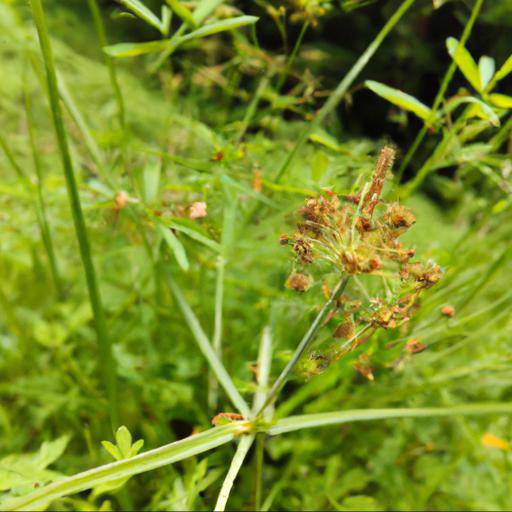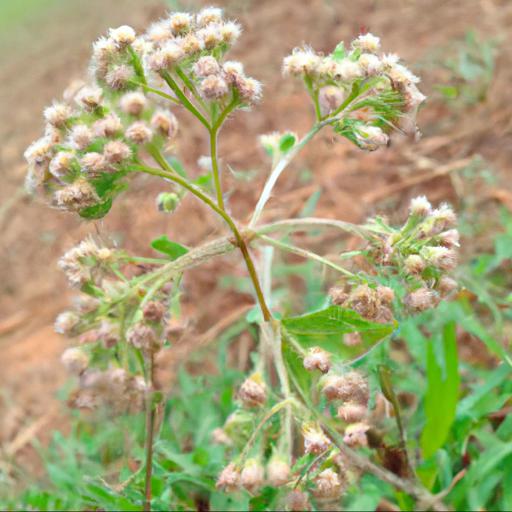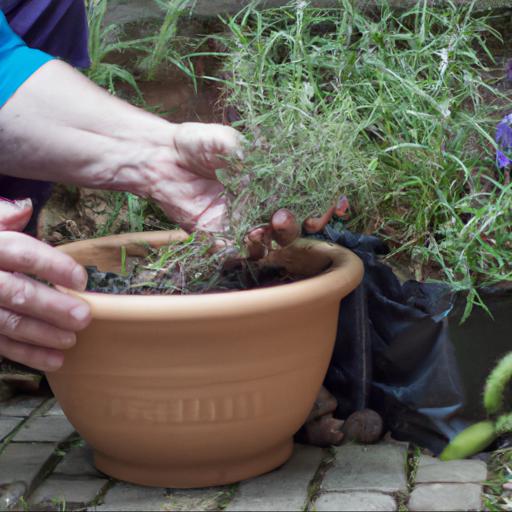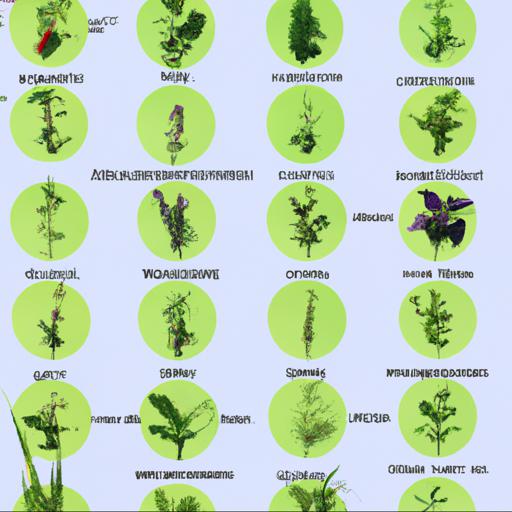Welcome to our blog post on the Top 10 Herbs for Wildlife! Herbs are an essential part of the natural ecosystem, providing nutrition, habitat, and natural defenses to the animals that call it home. In this post, we’ll be looking at the top 10 herbs that are beneficial to wildlife, discussing their many uses and benefits.
From providing food and shelter to medicinal properties, these herbs are an essential part of any healthy ecosystem. So let’s dive into the top 10 herbs for wildlife and learn how they help our feathered and furry friends!
Benefits of using herbs for wildlife

As a UK garden expert, here’s my take on the benefits of using herbs for wildlife. As a gardener, it’s always wonderful to see wildlife in the garden – birds and butterflies, foxes and hedgehogs, to name but a few. Herbs are a fantastic way of encouraging them in, providing valuable food sources and habitats.
Here are my top ten herbs to include in your garden to provide a helping hand to the wildlife. The first of the herbs on my list is lavender.
Not only is it an essential garden plant for its aroma and beauty, but it provides nectar for bees and other beneficial pollinators, as well as being a source for caterpillars to munch on. Another excellent choice of herb is tansy – a slightly more robust perennial that is loved by butterflies, moths and ladybirds.
This herb self-seeds freely so that you can have enough to provide for a large population of garden wildlife. One herb that is great for attracting birds and the insects that they feed on is yarrow. This resilient and easy to grow savoury herb is filled with pollen and nectar to draw in the pollinators.
Other herbs to consider are wild marjoram, dill, fennel, and angelica – all of which offer long lasting plant flower heads that give a plentiful food source during the drier months of the year. Finally, a few more useful herbs include garlic mustard, bugle and borage – all of which provide fantastic larval food sources for butterflies and moths, as well as being a valuable source of nectar for other pollinators. Try and pick a variety of herbs to ensure that you have something flowering throughout all seasons for wildlife to enjoy.
Top 10 herbs for wildlife

As a UK garden expert, I know the importance of creating a sanctuary for wildlife in the back garden. Providing a safe and welcoming refuge for birds, bees and other pollinators can be a great source of pleasure and satisfaction. When it comes to planning a wildlife-friendly garden, herbs are the perfect choice.
Herbs are incredibly versatile plants that provide a wide range of benefits for wildlife. Not only are they attractive and fragrant, but they also provide food for pollinators.
Here are ten of the best herbs for bringing wildlife into your garden. The first herb to consider is lavender. Lavender is a classic choice for gardens, with its beautiful purple flowers and sweet scent.
It attracts bees, butterflies and other pollinators, as well as wild birds. Lavender is also edible for humans, so you can use the flowers in cooking too!
Another great choice of herb for wildlife is rosemary. Not only is it a wonderful plant for providing a food source for pollinators, but it also has antibacterial and antifungal properties, which can help create a healthier garden environment. Plus, it has a wonderful fragrance and its woody branches are great for providing shelter.
The third herb to consider is thyme. The flowers of this herb are a great source of nectar for bees, and the leaves can help to repel unwelcome pests, like aphids and cabbage white butterflies.
The plant is also very aromatic, adding a pleasant scent to the garden. Next up is sage, which also provides a great source of nectar for wildlife. Its unique shade of purple is attractive to pollinators, and the leaves can be used in cooking to make all sorts of delicious dishes, from stuffing to sauces. Mint is another herb that’s very beneficial for bringing wildlife into the garden. Not only does it provide a source of nectar for pollinators, but its strong scent deter unwanted insects. Plus, the leaves have a refreshing flavour that can be used for making herbal teas. Dill is a very attractive herb that’s also beneficial to wildlife. Bees love the pollen-rich flowers, and the plant is also a great food source for caterpillars, providing a refuge for butterflies. Fennel is a great choice of tall herb for wildlife, providing a much-needed food and shelter in the garden. The foliage is fragrant and attractive to bees, while the young leaves are edible. Marjoram is a brilliant herb that’s perfect for attracting pollinators, such as bees and butterflies. The leaves can also be used in cooking to add flavour to dishes, and the scent of the flowers is known to drive away pests. Finally, parsley is a great herb for attracting wildlife, particularly for birds and small mammals. The leaves provide an important source of vitamins and minerals, as well as a tasty snack!These are just ten of the best herbs for bringing wildlife into the garden. Not only do they provide food for pollinators, but their aroma and beauty can also be a great source of pleasure for gardeners. With the right selection, you will have a wonderfully diverse garden full of wildlife.
How to plant and care for herbs

Growing herbs for wildlife can be a great way to provide food and shelter for your local birds and animals. By doing so, you can create a beautiful and thriving outdoor space in your backyard or garden. Whether you simply want to add some more flowers to your garden, or you are looking to create a wildlife friendly haven, choosing the right type of herbs can be a great way to create a wildlife friendly habitat.
In this blog post, we will look at the top 10 herbs for wildlife and discuss how to go about planting, growing and caring for these special plants in your own garden. When it comes to herbs for wildlife, some gardeners prefer hardy perennials that they can quickly and easily turn into an attractive and inviting environment.
For example, one of the most popular plants for wildlife is lavender, a long-flowering perennial herb that is hardy and reliable, providing a source of nectar and pollen all season. Other great choices are oregano, thyme and rosemary which can all help to attract different varieties of butterflies and bees. For a more natural approach, you may want to look into native herbs and wildflowers.
Some great wild herbs to include in your garden are foxglove, comfrey and coltsfoot which will provide food and shelter for insects and birds. As for planting, you can either buy pre-packaged seeds or order plants from your local nursery.
Either way, once you have planted the herbs, remember to water regularly in the dry Summer months. Overall, growing herbs for wildlife can create a beautiful and inviting environment for wildlife to live in. The most important aspect of wildlife-friendly gardening is making sure that you choose the right type of herbs and plants which will serve as food and shelter sources for different types of birds and animals.
Conclusion
This article explores the top 10 herbs that are beneficial for wildlife. These herbs provide essential vitamins, minerals and other nutrients that are necessary for the health and well-being of animals.
They also help to restore balance to the environment and provide a natural habitat for many species. These herbs can be found in many gardens, parks and other natural areas, making them easily accessible for wildlife. With proper care and maintenance, these herbs can provide a safe and healthy environment for all living creatures.
FAQ
What are the top herbs that are beneficial for wildlife?
The top herbs that are beneficial for wildlife include milk thistle, yarrow, nettle, dandelion, plantain, and red clover.
How do these herbs help wildlife?
Herbs can provide food and shelter for wildlife, as well as medicinal benefits. They can also help to improve soil quality and provide a habitat for beneficial insects.
What are the most common uses of these herbs for wildlife?
The most common uses of herbs for wildlife are for food, shelter, and medicinal purposes. Herbs can provide a source of nutrition for animals, provide cover and protection from predators, and can be used to treat a variety of ailments.
Are there any risks associated with using these herbs for wildlife?
Yes, there are risks associated with using herbs for wildlife. These risks include potential toxicity, the potential for overuse, and the potential for the herbs to interact with other treatments or medications. Additionally, there is the potential for the herbs to cause an allergic reaction in some animals.
Are there any other herbs that are beneficial for wildlife?
Yes, there are many other herbs that are beneficial for wildlife, such as lavender, chamomile, rosemary, thyme, mint, and oregano. These herbs can provide food and shelter for wildlife, as well as help to repel insects and other pests.
How can these herbs be used to attract wildlife to a garden?
Herbs can be used to attract wildlife to a garden by planting them in areas where they will provide food or shelter for animals. Herbs such as lavender, rosemary, and thyme can provide nectar for pollinators, while sage and oregano can provide cover for small animals. Additionally, herbs can be used to create a pleasant scent in the garden, which can attract birds and other animals.

